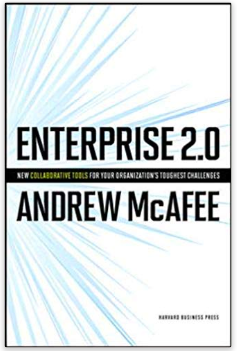 Every year for the past four years, after the Enterprise 2.0 conference in Boston, I have written an introspective piece about where we are on our journey bringing 2.0 to the large enterprise. These pieces tend to be idealistic, and I ask readers to bear with me. You can read their predecessors at this link.
Every year for the past four years, after the Enterprise 2.0 conference in Boston, I have written an introspective piece about where we are on our journey bringing 2.0 to the large enterprise. These pieces tend to be idealistic, and I ask readers to bear with me. You can read their predecessors at this link.
I’ve decided to write a final piece in this series, as we are now well on the road to market acceptance.
In short, the Enterprise 2.0 journey reminds me of learning how to drive a stick shift my first car: a ’66 Ford Mustang convertible. Like every new driver, I was extremely excited about the prospects of getting behind the wheel and experiencing the life-changing freedom that comes with mobility. Each year the Enterprise 2.0 market has grown, it’s been like a new gear on my 3-on-the-floor stick shift.
1. Years 2006-07/Gear 1. We focused on just getting the clutch engaged and propelling the the damned thing forward. Those early years were the most difficult of all. I used every trick in the book to get people interested in the space, including invoking the name of Bruce Springsteen.
“I believe there is something BIG going on here– not because I’m an investor, not because I’m a CEO of a web 2.0 company, not because I’m a journalist of a SF-based publication, heck– I’m not even on the West Coast. I feel a little like Mr. Springsteen in those early days, playin’ his heart out in those NJ dives hoping someone would dance, or better– listen to the lyrics.”
A handful of us hardcore Enterprise 2.0 bloggers kept pounding away and trying to get some attention for what we all saw as something, “New under the Sun” to quote Andrew McAfee.
2. Year 2008/Gear 2. We got the thing to move by 2008 albeit in slow gear. Momentum began to pick up toward the end of 2008 with




 I read an old-fashioned user-generated
I read an old-fashioned user-generated  lthough, admittedly, it’s scary facing the prospect of not having a salary during oh, say, the worst economic crisis ever in my adult life time, I remain optimistic. Let’s just say I’m taking a huge leap of faith that dictates when I jump off this ledge, there will be a large, strong net– the social web– ready to catch me. I’ve been inspired by so many in the 2.0 community to trust, to share, to work together to achieve common goals. Now I’m putting my own rhetoric to the test.
lthough, admittedly, it’s scary facing the prospect of not having a salary during oh, say, the worst economic crisis ever in my adult life time, I remain optimistic. Let’s just say I’m taking a huge leap of faith that dictates when I jump off this ledge, there will be a large, strong net– the social web– ready to catch me. I’ve been inspired by so many in the 2.0 community to trust, to share, to work together to achieve common goals. Now I’m putting my own rhetoric to the test.